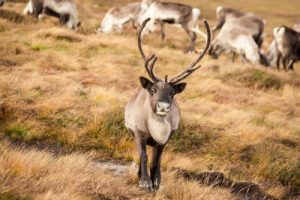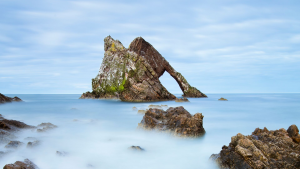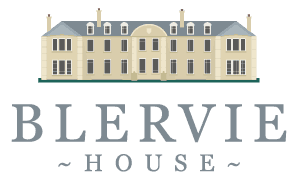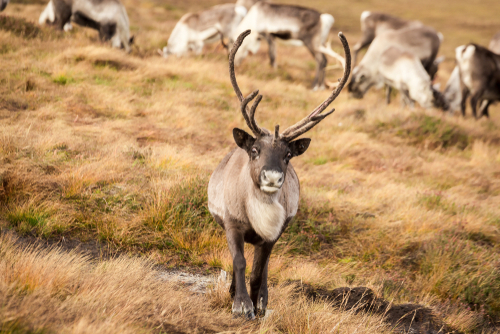R is for Reindeer and Rocks in Scotland as part of my A-Z List of Things To Do from Blervie House. Indeed, Scotland is not known for its Reindeer despite having tundra landscapes in the mountains. Still, due to the dramatic geologic formation of Scotland, it is undoubtedly renowned for some majestic rock formations.

I probably don’t need to tell you that Scotland is a vast swathe of remote, majestic Mountain beauty. Indeed if you are driving to us at Blervie House, you will most likely come through Scotland’s second national park, The Cairngorms National Park. It consists of high plateaux at about 1000-1200 above sea level with granite cliffs and forms an artic-alpine mountain environment with tundra-like characteristics. It is not uncommon to see snow on mountain tops on a sunny day, even in June!
Reindeer in Scotland
This is why you will now find The Cairngorm Reindeer herd based in Aviemore grazing over 10000 acres of the mountainside. These Reindeer were reintroduced in 1952, having disappeared from Scotland 800 years ago. Before that, it was not uncommon to hunt both Red Deer and Reindeer simultaneously. The unique sub-arctic qualities of the Cairngorms now provide a perfect home for Reindeer. T is the only place in the UK to support such an animal.
So if Scotland is to provide you with your only Artic experience, why not take a daily guided Hill Trip up the Hill to see the herd? Here you will meet these inquisitive characters and spend some time in the heather on a Scottish Hillside with breathtaking views.

Alternatively, you can spend some time with the deer on a Paddock Visit. They are so soft if you can feel their coats.
Rocks in Scotland
If you visit the Reindeer, you will also see some Rocks. As you will see, the Cairngorms National Park is majestic with its mountains and well known for both Munro bagging and Rock Climbing.
However, suppose you drive north and east of us here at Blervie House. In that case, you come upon an incredible coastline ranging from flat sandy endless beaches to a coastline of sheer cliffs with unique caves or a different type of beach again with stunning rock formations easily visible on your afternoon stroll.

These coastlines are so much part of Scotland. T ink of Dunnottar Castle – no rocky promontory can be more dramatic than Dunnottar. Then again, if you are taking the time to visit the Islands of, say, Skye or Orkney, you probably have Kilt Rock and the Old Man of Hoy on your must-see list.
However, when in Moray, take the time to see Bow Fiddle Rock. Cited off the coast at Portknockie, Bow Fiddle Rock is an incredible natural formation formed by the sheer force of waves alone. Over time, some (1,000 to 541 million years), the pressure of the waves in the North Sea has sculpted this famous landmark into its unique bow-shaped formation, which makes for a great photo opportunity. H ad to Portknockie, between Findochty and Cullen, and see this stunning landmark for yourself, A natural sea arc so called because it resembles the tip of a fiddle bow. It is composed of Quartzite, a metamorphic rock originally quartz sandstone.

From us here at Blervie, you can have a fabulous day out exploring the northeast Coastline, think small fishing villages, abandoned Castles, dolphins, fresh sea air, crashing waves, sand, and small cafes, and sampling the local specialities, notably Cullen Skink. Exploring the fishing villages on this Coastline is one of my favourite activities, so aside a little time to explore.


